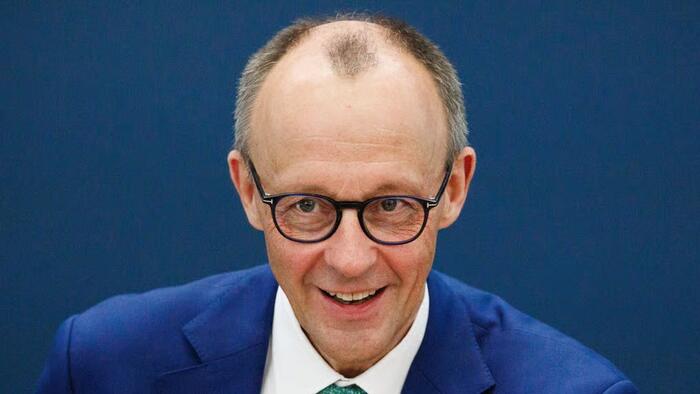


Submitted by Thomas Kolbe
In Berlin’s government circles, anticipation is rising: the massive debt program is ready for launch. Soon, the 500-billion-euro credit package—disguised as a “special fund”—will hit the economy like a tidal wave, supposedly to free the country from its chronic recession.
Looking back, Chancellor Friedrich Merz’s term in office will likely be remembered for one thing above all: his gigantic debt orgy. Half a trillion euros in new borrowing—added on top of the already planned annual deficit of 3.3% of GDP—are supposed to reignite the faltering economic engine over the next decade.
Year after year, the debt mountain, already 65% of GDP, will grow by another 1.15% in new debt. The annual net borrowing thus climbs to 4.6%—a far cry from the once “sacred” Maastricht thresholds. Those days are long gone. Berlin hopes for a Keynesian miracle, ignoring the fact that such policies always deepen structural problems rather than solving them.
According to Handelsblatt, citing insider sources, Economics Minister Katharina Reiche (CDU) will present the new growth figures on Wednesday.
Her ministry’s outlook aligns closely with the joint forecast of Germany’s leading economic institutes: both the DIW and RWI now expect GDP growth of 1.3% for 2026 and 1.4% for 2027.
All of them are counting on the debt stimulus—more is better, and qualitative questions or the limits of economic planning have long since disappeared from view. The belief that the economy can be centrally managed is now dogma in Berlin. The free market is treated as an adversary.
Chancellor Merz recently declared a “turnaround” in investment flows. After years of massive capital flight, he now claims that money is returning to Germany. He seems to believe that the additional €50 billion in new loans—mostly directed into climate projects, infrastructure, and military expansion—will trigger a private investment boom. Through state guarantees, private capital is to be “mobilized.”
It’s a wager that debt-driven stimulus will revive the economy. In reality, it’s Habeck-style logic—industrial decay and bankruptcies are baked into the cake.
This “growth” is a statistical illusion. It doesn’t reflect market-driven investment or real demand—it’s a debt-fueled mirage, a bonfire lit by the printing press.
The consequences will be devastating: taxpayers will foot the bill through higher taxes or inflation once the new credit mass meets a stagnant economy and limited supply, pushing prices up.
True prosperity and growth must be measured differently. In a free market, goods and services arise from genuine demand. The state, by contrast, becomes a consumption factor that destroys purchasing power through bureaucracy.
The same applies to investment. Ideologically driven projects like the “green transformation” are, in truth, capital destruction programs. They drain scarce resources from the private sector, drive up financing costs, and tighten the labor market by tying up workers in unproductive bureaucracies.
For context: the state’s share of GDP currently stands at about 50%.
With a planned new debt ratio of 4.7% next year and projected GDP growth of only 1.3%, the private sector would need to shrink by roughly 3.4% in real terms to make the math work.
In other words: Germany is already deep in a debt spiral where each additional euro of public borrowing yields diminishing growth. The government plans to raise spending another 4–5% next year—piling more weight onto the private economy’s back. As the state expands, the productive backbone contracts. Berlin calls it “progress.”
The administration is now preparing to inject its vast debt package into the parched channels of the green subsidy industry and the emerging war economy. On German Unity Day, Merz wrapped this in lofty rhetoric—speaking of renewal, vigor, and optimism, urging citizens not to be paralyzed by fear.
But behind this staged optimism lies nothing of substance. Not a word about who will ultimately pay the bill for this credit-fueled firework—through taxes, inflation, and the erosion of savings. This isn’t a “new dawn.” It’s a demolition party.
While Berlin and Brussels double down on propping up their state-fed pseudo-industries, others are moving in the opposite direction. In the U.S., fiscal burdens for citizens and businesses are falling. In Florida, lawmakers are even discussing abolishing property tax altogether.
Washington is deregulating the energy sector, freeing it from the CO₂ straitjacket—while in Germany, every effort to restore market order gets buried under green dogma.
Quite the opposite: Berlin is already paving the way to refinance its debt binge through higher inheritance taxes and the abolition of the spousal tax break. Merz is working overtime to expand an already overextended state sector—now consuming more than half of the economy—while crowding out private enterprise step by step.
His pledge to cut bureaucratic costs by €16 billion and eliminate 8,000 public jobs belongs in the realm of political fairy tales. The distribution of the new debt torrent alone will require thousands of new administrators.
Germany is on a fatal path—into a new form of eco-socialism where the state is once again the center of the universe and the market is reduced to a mere auxiliary engine to keep the fragile edifice afloat for a little while longer.
* * *
About the author: Thomas Kolbe, born in 1978 in Neuss/ Germany, is a graduate economist. For over 25 years, he has worked as a journalist and media producer for clients from various industries and business associations. As a publicist, he focuses on economic processes and observes geopolitical events from the perspective of the capital markets. His publications follow a philosophy that focuses on the individual and their right to self-determination.
